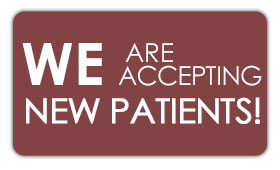Scoliosis affects between 5 and 7 million people in the United States. More than 500,000 visits are made to doctors’ offices each year for evaluation and treatment. Although scoliosis can begin at any age, it most often develops in adolescents between the ages of 10 and 15. Girls are more commonly affected than boys, by a ratio of 7:1. Because scoliosis has a genetic link, a trained professional, in scoliosis management, should evaluate children whose parents or siblings are affected by it.
The human nervous system constantly works, via subtle changes to muscles, to keep our spine in a straight line, but occasionally a lateral (sideways) curvature develops. If the curvature is larger than 10 degrees, it is called a “scoliosis.” Curves less than 10 degrees are often due to changes in posture. In more than 80% of structural scoliosis cases, the cause of the curvatures is unknown. This condition is called idiopathic scoliosis. Research has shown that 15% of scoliosis are congenital (the result of an abnormality of the development of the vertebrae) and about 5% are secondary, due to an underlying neuromuscular disease. Another category of scoliosis is non-structural, or functional, scoliosis. This occurs when there is a problem with another part of the body which causes a curve in the spine. For example, a discrepancy in leg length can cause the spine to curve to one side. Muscle spasms and inflammation may also cause this problem. When a scoliosis is classified as non-structural, treatment is aimed at the underlying problem. Although scoliosis is most commonly associated with children, adults can also develop it. In some cases, they may have actually had it their whole lives, but it has been undetected until it started to cause pain or other problems. In other cases, age-related changes in the spine, such as disc degeneration, can lead to scoliosis.
Evaluation begins with a physical examination, postural analysis and a review of the patient’s medical history. If a scoliotic curvature is discovered, a more in-depth evaluation is needed. This might include a search for birth defects, trauma, and other factors that can cause structural curves. Patients with a major spinal curvature often require an x-ray evaluation of the spine to determine the location and size of the scoliosis. This can also reveal any possible underlying causes, which were not apparent during the physical examination. Occasionally, x-rays of the wrist are also performed to determine the skeletal age of the person. This helps the doctor determine the likelihood of the progression of the condition. Depending on the scoliosis severity, x-rays may need to be repeated as often as every 3 to 4 months to monitor the progression. In less serious cases, the procedure may only be required every few years.
There are generally three treatment options for scoliosis: 1. Careful observation 2. Bracing and 3. Surgery. Careful observation is the most common “treatment,” because most mild cases of scoliosis do not progress. Bracing is generally reserved for children who have not reached skeletal maturity. Bracing is generally used to prevent scoliosis from getting worse when you have a curve that is moderate in size (25 to 40 degrees) or a curve that is progressive (has increased by more than 5 degrees). Surgery is generally recommended in those cases where the curves are greater than 45 degrees and progressive, and/or when the scoliosis may affect the function of the heart, lungs or other vital organs.
Spinal manipulation, therapeutic exercise, and electrical muscle stimulation have been advocated for the treatment. The goal is to restore proper vertebral motion, decrease muscle tension/compensation and decrease pain. A study, published in the Journal of Chiropractic Medicine, observed 28 individuals diagnosed with scoliosis. Each person received chiropractic care for a period of six months. Their Cobb angle (the angle of the curvature), level of pain and level of disability were all assessed at the beginning of the study, after the treatment had concluded, and 24 months after the study had begun. Researchers found that chiropractic care for scoliosis resulted in the patients experiencing lower levels of pain and disability, as well as improvement in the angle of the curvature.

 I grew up in Dayton, Ohio and completed my chiropractic education at Logan College of Chiropractic in St. Louis Missouri. After graduating chiropractic school I moved to Nashville. I have practiced in Nashville for 10 years and Nolensville for over 7 years. I enjoy spending time with my family, dogs, golfing, kayaking, watching college sports and being an active member of the Nolensville community and serving its health needs.
I grew up in Dayton, Ohio and completed my chiropractic education at Logan College of Chiropractic in St. Louis Missouri. After graduating chiropractic school I moved to Nashville. I have practiced in Nashville for 10 years and Nolensville for over 7 years. I enjoy spending time with my family, dogs, golfing, kayaking, watching college sports and being an active member of the Nolensville community and serving its health needs.